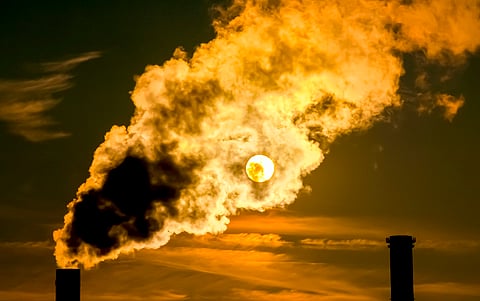

The world is getting better at spotting methane leaks, but not nearly fast enough at stopping them. A new United Nations Environment Programme (UNEP) report released on October 22 warned that while transparency in methane emissions has grown tenfold, nearly 90 per cent of detected leaks still go unaddressed — threatening to derail the global goal of cutting methane 30 per cent by 2030.
UNEP’s An Eye on Methane 2025 report found that one-third of oil and gas methane emissions are now tracked using real-world measurements — a major leap from estimation-based inventories that long underestimated the scale of the problem. Its Oil and Gas Methane Partnership 2.0 (OGMP 2.0), now spanning 153 companies across 90 countries, covers 42 per cent of global production.
But the data revolution is outpacing action. Since 2022, UNEP’s Methane Alert and Response System (MARS) has sent over 3,500 satellite-based alerts about “super-emitter” events across 33 countries. Yet while responses rose from 1 per cent to 12 per cent in the past year, most emissions events remain ignored.
“Reducing methane can quickly bend the curve on global warming, buying time for long-term decarbonisation,” said Inger Andersen, UNEP’s executive director. “But progress on reporting must now translate into real cuts. Every company should join OGMP 2.0 — and governments must respond to alerts, not file them away.”
Methane, the second-largest contributor to climate change after carbon dioxide, is over 80 times more potent over 20 years but remains in the atmosphere for far less time. That makes it the world’s “climate emergency brake” — one that, UNEP warns, is still not being pulled hard enough.
UNEP’s International Methane Emissions Observatory (IMEO), launched in 2021, combines satellite data, artificial intelligence and field measurements to close the gap between estimation and evidence. It has become the backbone of methane regulation in the European Union — the world’s largest energy market — and is now shaping policy from Asia to the Americas.
For the first time, Indian firms Cairn Oil & Gas and Pipeline Infrastructure Ltd have joined OGMP 2.0, committing to report emissions using direct measurements. Their inclusion is significant: India is among the world’s top methane emitters, largely from agriculture and fossil fuels. While most national reporting still relies on inventory estimates, UNEP officials say India’s entry into the global framework can help build credible baseline data for mitigation.
“India’s oil and gas sector has the technical capacity to leapfrog into measurement-based reporting,” said Pooja Munshi, IMEO’s programme lead. “This shift is essential not only for accuracy but also for accountability — and to unlock finance for real reductions.”
UNEP is also broadening its scope to the steel and waste sectors, targeting what it calls “gigaton opportunities at minimal cost”. The new Steel Methane Programme focuses on metallurgical coal, responsible for about 12 million tonnes of methane a year — equal to nearly one gigaton of CO2. These emissions, it notes, could be curbed at just one per cent of the cost of steel production through simple oxidation and drainage systems.
Meanwhile, MARS will soon track methane from coal mines and landfills — two of the least monitored yet most fixable sources. UNEP’s methane science studies have already expanded to six continents, testing new detection technologies and quantifying leaks from major coal and waste sites, including a pilot at a landfill in Spain.
Despite progress, UNEP cautions that credible data alone will not cool the planet. With only 52 months left to meet the Global Methane Pledge, Andersen urged governments and companies to act faster.
“The data revolution has given us clarity,” she said. “Now it must deliver action. We have the satellites, the science and the solutions — what’s missing is speed.”
The report also calls for greater accountability among oil majors that are not yet part of OGMP 2.0. Almost two-thirds of global production still lies outside UNEP’s gold-standard monitoring framework, leaving a blind spot that could undo climate progress.
In a decade where “net zero” dominates headlines, the UNEP’s latest report on methane emissions delivers a simple reminder: the quickest way to cool the planet may not be futuristic hydrogen or billion-dollar carbon capture — but plugging the leaks already visible from space.